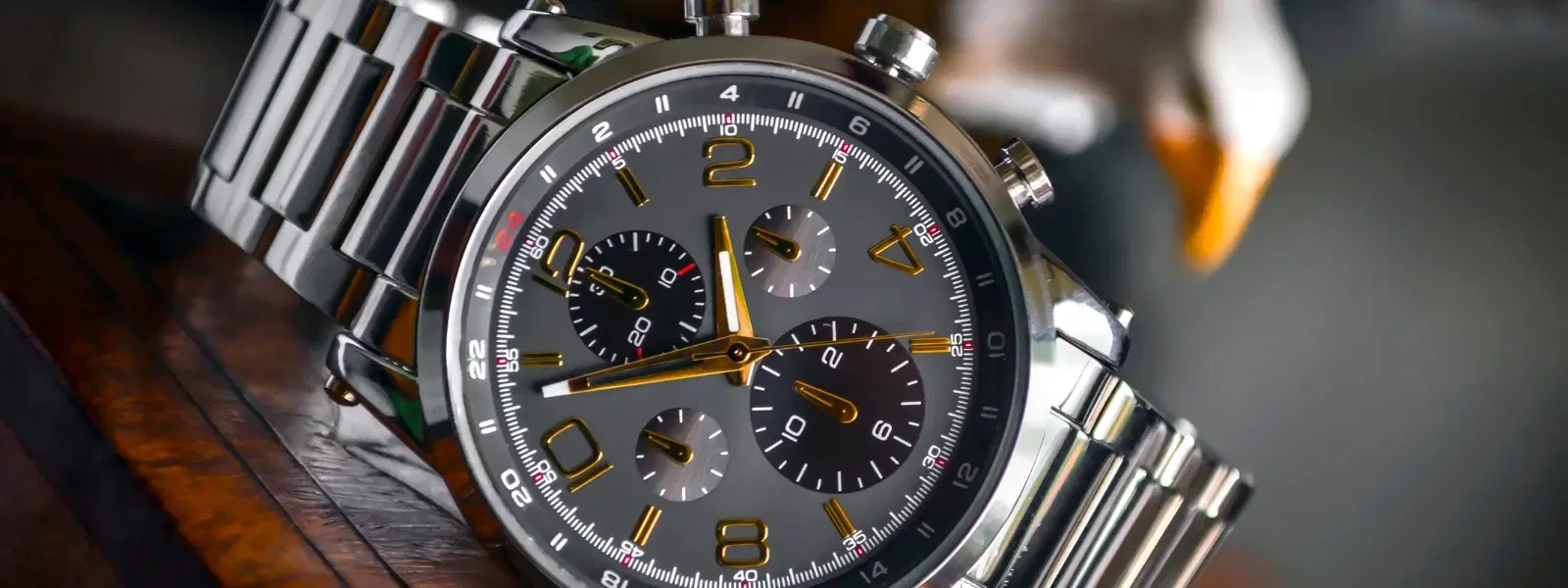
Luxury Edit
•04 min read
-8704a161-e35d-4932-b982-017add6889b1.png&w=3840&q=75)
Automatic watches are marvels of engineering that combine artistry and precision to create self-sustaining timepieces. In this luxury guide, we explore the fascinating mechanisms behind these premium mechanical watches, unveiling unique components and the intricate processes that keep them ticking. By the end of this post, you'll appreciate the craftsmanship of luxury watch movements and understand how automatic watches work as a symbol of refined style.
Automatic watches, also known as self-winding watches, are mechanical timepieces that harness the kinetic energy generated by your daily movements. Unlike quartz watches that rely on batteries, these watches use a mainspring to store energy and power the watch. This self-winding watch function means no frequent battery changes and a continuous display of luxury and precision. Embracing the elegance of premium mechanical watches, these timepieces are a testament to the art of horological engineering and a unique personal expression.
Automatic watches are celebrated not only for their functionality but also for their design and engineering. These key features include:
No Battery Dependency: They operate solely on mechanical energy, eliminating the need for batteries.
Elegant Design: Crafted with premium materials, they are a hallmark of luxury watch movement and style.
Self-Sustaining Mechanism: The rotor in automatic watches plays a vital role in ensuring continuous energy generation as long as the watch is worn.
The automatic watch mechanism comprises several key components that work in harmony to deliver flawless timekeeping. These include the rotor, mainspring, gear train, escapement mechanism, and balance wheel. In this elegant system, the rotor converts wrist movements into energy. The mainspring stores this energy, while the gear train transmits it to the escapement mechanism that carefully regulates energy release and controls the oscillation of the balance wheel. This detailed process is a fine example of mechanical watch operation and luxury timepiece engineering.
When you wear an automatic watch, every movement helps the rotor spin and wind the mainspring. The stored energy is gradually released through the gear train and escapement mechanism, setting the balance wheel into motion. This ensures that the watch continues to tick accurately, showcasing how self-winding watches work without the need for batteries. The synergy among these components highlights the intricate dance of luxury watch movement and the engineering marvel behind premium mechanical watches.

Luxury automatic watches stand out because of their meticulous craftsmanship and sophisticated design. These watches feature movements that are hand-assembled and decorated, demonstrating expert attention to detail. Often made with high-quality materials such as sapphire crystal, gold, and titanium, they offer not just accurate timekeeping but also a sense of exclusivity and style. Such watches often incorporate additional complications like moon phases, chronographs, or tourbillons, reinforcing their status as truly premium mechanical watches.
The refined nature of premium mechanical watches can be seen in various aspects of their design and functionality. Key differentiators include:
High-Quality Materials: Utilization of sapphire crystals, gold, and titanium to enhance both durability and aesthetic appeal.
Hand-Finished Movements: Each movement is a piece of art, crafted with precision by skilled artisans.
Enhanced Power Reserve: Many luxury timepieces come with an automatic watch power reserve that extends the watch’s operation even when not daily worn, embodying the brilliance of modern luxury watch movement.
Automatic watches operate based on simple yet effective physics. They convert the kinetic energy from your natural motions into stored energy using a self-winding watch function. This principle removes the need for batteries, making these timepieces an excellent example of mechanical watch operation. The rotor’s movement is central to this process, ensuring that kinetic energy is efficiently transferred to the mainspring. As a result, every gesture you make keeps your luxury watch movement alive and vibrant.
Even though automatic watches are engineered to be self-sustaining, a gentle manual winding can optimize their performance when they have been unworn for a while. A few turns of the crown, typically 20-30 rotations, can help build the necessary energy in the mainspring. This additional step not only improves accuracy but also invigorates the entire mechanism, ensuring your premium mechanical watches continue to function seamlessly.
Maintenance plays a crucial role in preserving the beauty and accuracy of your automatic watch. As with all luxury items, regular care is essential to maintain both the sophisticated aesthetics and the exquisite craftsmanship. To keep your prized timepiece in optimal condition, consider the following care tips:
Regular Servicing: Scheduling a service every 3-5 years ensures the mechanism remains in excellent working order.
Proper Storage: When not wearing your watch, keep it on a watch winder to maintain its self-sustaining rhythm.
Gentle Cleaning: Use a soft microfiber cloth to clean the case and strap, preserving its finish and shine.

Did You Know? The jewels used in automatic watches aren’t just decorative—they are synthetic rubies that reduce friction and enhance the durability of the watch escapement mechanism, ensuring smooth operation of the gear train and overall longevity of the timepiece.
Automatic watches use a rotor to convert kinetic energy from daily wrist movements into energy that powers the watch.
No, modern automatic watches are equipped with safety mechanisms to prevent the mainspring from being overwound.
The power reserve is the amount of stored energy a fully wound mainspring holds, typically ranging from 38 to 80 hours.
Manual winding is done by gently rotating the crown clockwise about 20-30 times to build up energy in the mainspring.
Mechanical watches require manual winding, whereas automatic watches harness kinetic energy from wrist movement to power themselves.
Automatic watches are masterpieces of luxury engineering, fusing mechanical ingenuity with timeless design. Their self-sustaining operation and sophisticated components, such as the rotor and watch escapement mechanism, underscore a deep commitment to quality and precision. Understanding how self-winding watches work offers insight into the art and science behind premium mechanical watches—a true celebration of luxury watch movement engineering. Enjoy exploring these intricate timepieces that continue to set trends and inspire self-expression.